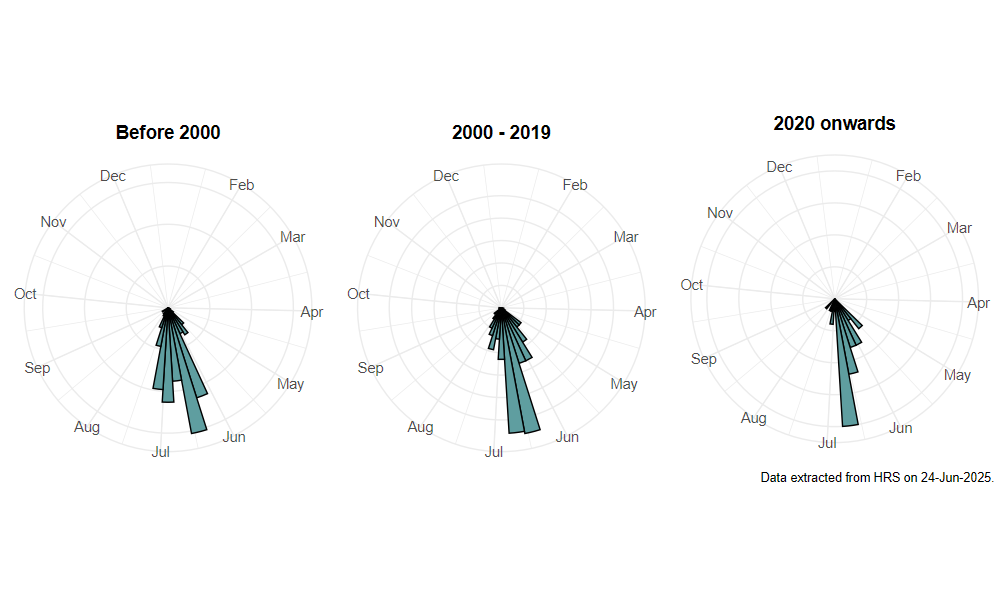Trichopsomyia flavitarsis (Meigen, 1822)
Identification
Identification difficulty = 2. ![]()
![]() according to Ball & Morris, 20241
according to Ball & Morris, 20241
Synonymy
Parapenium flavitarsis (Meigen, 1822) in Coe(1953)2 and Kloet & Hincks (1976)3.
Biology
The larva develops on the psyllid Livia juncorum in the galls that this insect forms on Jointed Rush Juncus articulatus. Adults fly low amongst dense vegetation and visit low-growing flowers, such as Tormentil Potentilla erecta. They occur in fens, rushy meadows and boggy areas in moorland including Bog Myrtle Myrica gale stands and Purple Moorgrass Molinia caerulea grasslands. Males hover in small groups near shelter, such as bushes.
Flight period
The following plots show the number of unique records per week excluding those reported to be of immature stages.

Distribution
Locally abundant where suitable habitat occurs, extending well above the tree line in the Scottish Highlands. Field experience suggests that this species is more frequent in the north and west of Britain, but this is not obvious from the map, which may reflect lower levels of recording in these areas. In southern Britain it is much more restricted by the availability of its habitat, but can still be found in suitable localities.

Trends
The following plots show the Frescalo TFactor vs year and a map of the rescaled frequency (all records) for the species.
-
Ball, S., & Morris, R. (2024). Hoverflies of Britain and Ireland. WILDGuides (3rd ed.). Oxford: Princeton University Press. ↩
-
Coe, R. (1953). Diptera: Syrphidae. Handbooks for the Identification of British Insects, 10(1), 1–98. ↩
-
Kloet, G., & Hinks, W. (1976). A check list of British insects. 2nd Ed. Part 5: Diptera and Siphonaptera. Handbooks for the Identification of British Insects, 11, 1–139. ↩